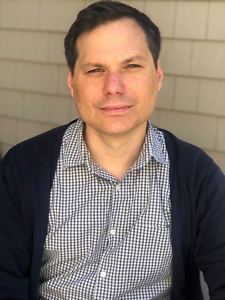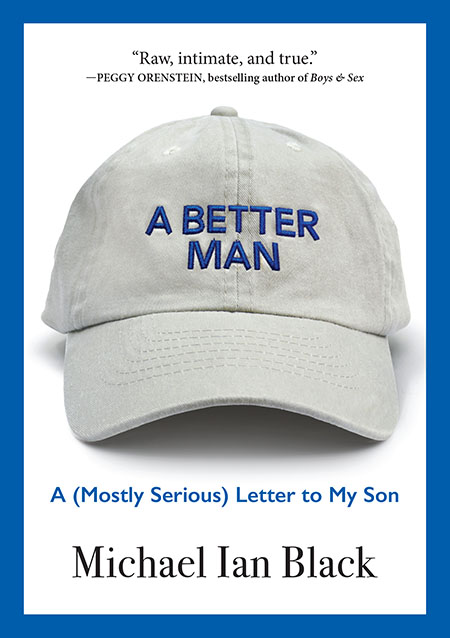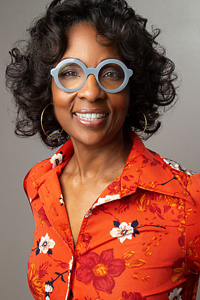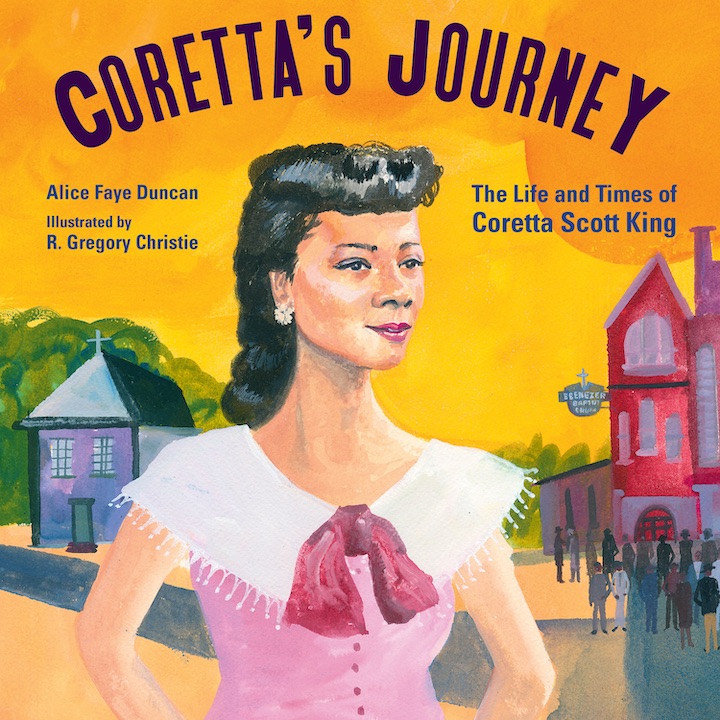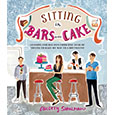The Mystery of Creativity
Children’s author Kevin Henkes talks with Chapter 16 about fruit cocktail and the creative process
Kevin Henkes may be most famous for Lilly’s Purple Plastic Purse, his megabestselling picture book, but he has published more than thirty books and has proven incredibly adept at making the tricky transition between picture books and novels for young readers. Among his many honors are a Caldecott Honor for Owen in 1994, a Newbery Honor for Olive’s Ocean in 2004, and the Caldecott Medal for Kitten’s First Full Moon in 2005. His newest chapter book, The Year of Billy Miller, is a sweet and savvy story told from the point of view of a seven-year-old boy. Henkes portrays Billy’s fears and foibles, public pratfalls, and quiet triumphs in the light of his closest relationships. It’s a lovely meditation on the fabric of family and community.
 Henkes recently spoke with Chapter 16 by phone prior to his appearance at the Southern Festival of Books.
Henkes recently spoke with Chapter 16 by phone prior to his appearance at the Southern Festival of Books.
Chapter 16: The story goes that you were awarded a book contract at age nineteen, two days after arriving in New York City. As extraordinary as that tale sounds, it is possibly even more extraordinary that you are still with the same publisher more than thirty years later. Can you talk a little about your relationship with Greenwillow Books and how it has lasted so long?
Henkes: I was drawn to Greenwillow Books because I liked what they published. I thought they were real, solid books for real kids. They weren’t slick or trendy, and they weren’t for adults (and I think a lot of children’s books are). They also weren’t ironic or sarcastic. Susan Hirschman was editor-in-chief and founder of Greenwillow Books, and she created a wonderful working environment for me as a nineteen-year-old. She was a great mentor.
I worked with Susan until she retired, and I now work with Virginia Duncan, the current publisher of Greenwillow, and she carries on the tradition that Susan started. So I have no reason to go anywhere else. I feel that there’s a real trust there, and I think the editor/author relationship really does boil down to trust. It feels very familial. Greenwillow is one of those houses where people don’t come and go very much. I had one art director and one editor for years until they retired. It’s very steady and I like that. And I really like being published by one house; it keeps everything easier.
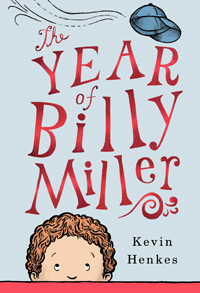 Chapter 16: You studied art at the University of Wisconsin and provide the illustrations for most of your books. Occasionally you have worked with other illustrators, though, including Dan Yaccarino, Anita Lobel, and your wife, Laura Dronzek. How do you decide whether to work alone or with others and what is the collaborative experience like for you?
Chapter 16: You studied art at the University of Wisconsin and provide the illustrations for most of your books. Occasionally you have worked with other illustrators, though, including Dan Yaccarino, Anita Lobel, and your wife, Laura Dronzek. How do you decide whether to work alone or with others and what is the collaborative experience like for you?
Henkes: The picture books of mine that have been illustrated by someone else have come to be because I’ve been working on a novel—and because they’re longer, I’m working on them for quite a long time—and sometimes I’ll get stuck and need something to get me unstuck. So I will sometimes write a picture book, but my heart and soul is still with the novel, and I don’t want to take the time to illustrate the picture book, so those are the ones that I have sort of “given up” for others to illustrate. And I might see some sketches, but often I don’t see anything until the finished book comes out. It’s sort of like getting a prize in the mail. My wife has illustrated a couple of the picture books (Birds and Oh!) and those have been different in that—because we work across the hall from one another—I get to see things throughout the whole process, and that’s been fun.
Chapter 16: You have had the rare ability in your career to move successfully from picture books to chapter books to novels and back again, earning top honors in all categories. Does the initial story idea dictate the format, or is there another process you use to make that choice?
Henkes: The creative process is mysterious. I think it’s difficult to understand and even more difficult to explain. I’m not quite sure where the ideas come from, but they tend to lend themselves to different formats. I think content dictates form, so I suppose they choose me; I don’t choose them. Often when I’m working on a picture book, I will think, “Oh, I wish I were working on a novel,” and sometimes when I’m working on a novel and I’m stuck, I think, “Oh, I wish I were working on a picture book. It’s so much more fun—I could be sitting doing pictures.”
Each is equally difficult. A picture book is shorter, but shorter doesn’t mean easier to write. And a picture book tends to be simpler in a certain way, but I think they are just as complex in other ways. It’s just a different art form. The fact that there are fewer words [in a picture book] means that there is less margin for error. Everything has to be exactly right. I think a really great picture book is a perfect combination of the pictures and the words, and the pictures do a great deal of the storytelling. What I sometimes find is that when I’m working on the illustrations for a picture book I can take things out of the text that were there originally because I don’t need the words anymore.
Chapter 16: Your books portray universal themes such as overcoming fears, accepting differences, dealing with strong emotions, and handling difficult relationships. Is there a theme that you are particularly proud of having addressed? Or perhaps one you have yet to tackle?
Henkes: I don’t think about themes when I’m working. I tend to begin with character, and the story grows out of that. Often when I’m done I’m sort of surprised when someone will say, “Oh, this is a book about overcoming fear,” or “This is a book about overcoming one’s worries,” or “This is a book about understanding differences with other people.” And that’s pleasing to me, but it’s not an intent that I am aware of. Anytime that I have tried to write a book with something particular in mind, it hasn’t worked. So for me theme isn’t a conscious choice but something I think that just develops as the story develops, as the character develops, and becomes deeper and richer as I work.
Lilly, for instance, first appeared in Chester’s Way, a story about two boy mice—Chester and Wilson. It was a book about friendship, and I needed something to shake their friendship up. I toyed with different ideas. One idea was that one of them would move away, and as I was figuring out where the story would go, the idea of a new friend moving into the neighborhood struck me. And I thought it would be nice maybe to have it be a girl, and it would be interesting to have her be very different than they were. So it all just happened. None of it was planned. And that tends to be the way that it goes. Sometimes afterward when a book is completely done I am surprised by them, and I forget all the struggles that one goes through to bring something to completion.
Chapter 16: And have you ever started with a character or a story and not been able to get it to work and had to abandon that idea and start over with something different?
Henkes: Oh, yes, that happens. My first editor, Susan Hirschman, once compared it to a compost pile: even if one doesn’t use something now, if one puts it away, perhaps it will grow and percolate and turn into something else. And that’s happened.
Chapter 16: What is the most important thing you have learned about your craft after all these years? What advice would you give to an artist or writer who is just beginning?
Henkes: I think one very important thing I’ve learned is to trust my instincts and not to be concerned with trends or what seems to be selling, or reviews, but to really follow my vision. And I think my advice to beginners would be to really know which publishers publish the kinds of books that they are drawn to because there’s a different feel to what different houses publish. It’s really important to do the research and figure out which houses publish books that they really admire and where they feel that their work might fit in.
Chapter 16: The unifying thread running through your new chapter book, The Year of Billy Miller, is his personal relationships—with his teacher, father, sister, and mother. Why did you choose to tell Billy’s story through his interactions with these significant people in his life? And who are the corresponding significant people in your life, as represented in the book’s dedication?
Henkes: It happened sort of by chance. When I began I wanted the book to be appropriate for a young reader, so I didn’t want just one long story. I wanted there to be shorter stories to give the reader a reward sooner. I thought, if I divide it into sections, how would that be? What would be a good number? I did want it to have an overall arc, which I think it does: things that happen in the first story carry over into the next and the next. But I thought four would be a nice number—there are four seasons, there are four people in his family, and this is very much a story about family. But, of course, he is one of those people so there needed to be another person, and I thought the teacher was perfect because at that age in a person’s life a teacher is a very dominant figure. And I wanted it to be a school story so that made perfect sense. Those are four people who are really important in my life: my wife, my son, my daughter, and Susan Hirschman.
Chapter 16: I noticed while doing research that many, if not most, of your novels are set during the summer. Do you find that season to be particularly suited to the kinds of stories you are telling, or is there perhaps a more personal reason?
Henkes: It’s interesting that you ask that because I once got a letter from a class who had read most of my books and pointed out certain things that they noticed, and one was that so many of the novels are set in the summer. And I hadn’t realized that until they pointed it out. I began thinking about it, and the only thing I could come up with is that I remember with great fondness summers—they seemed endless and wonderful. I grew up in a neighborhood in which there were many children, and I have great memories of that time. It seems to me that summers always held great possibility.
Chapter 16: One of my absolute favorite lines of yours comes from Sheila Rae, the Brave, an early book, in which the narrator says, “At dinner, Sheila Rae made believe that the cherries in her fruit cocktail were the eyes of dead bears, and she ate five of them.” This very specific description sounds like it might have been inspired by a real-life event. Did you and your siblings by any chance get creative with your fruit cocktail?
Henkes: I made it up. But I have to say that fruit cocktail was very big in my life as a boy. It was something that we had a lot, and I remember we used to fight over the cherries, and the “dead bear eyes” just came to me one day. When I’m writing I often do think back to when I was a boy. I remember many people thinking that I had children long before I did just because of the nature of my work. And then when I did become a father, many people said, “Oh, now you’ll have more ideas than ever,” and I found that not necessarily to be true. I think the ideas come from somewhere within, and even though I might be inspired from something that I see, or a kernel of an idea might come from one of my kids, I think one needn’t have kids to be in this field, and, in fact, some of the greats never had children: Maurice Sendak, Ruth Krauss, Margaret Wise Brown, Crockett Johnson.
Chapter 16: Do you think it’s necessary, then, to have very clear memories of your own childhood to write for children?
Henkes: No, I don’t. No. I remember how things felt, I think, fairly well. Maybe it’s just being perceptive. Maybe it’s being empathetic. I don’t know. Again, it’s part of that creativity that’s mysterious.
Kevin Henkes will discuss The Year of Billy Miller at the twenty-fifth annual Southern Festival of Books held in Nashville October 11-13, 2013. All festival events are free and open to the public.
